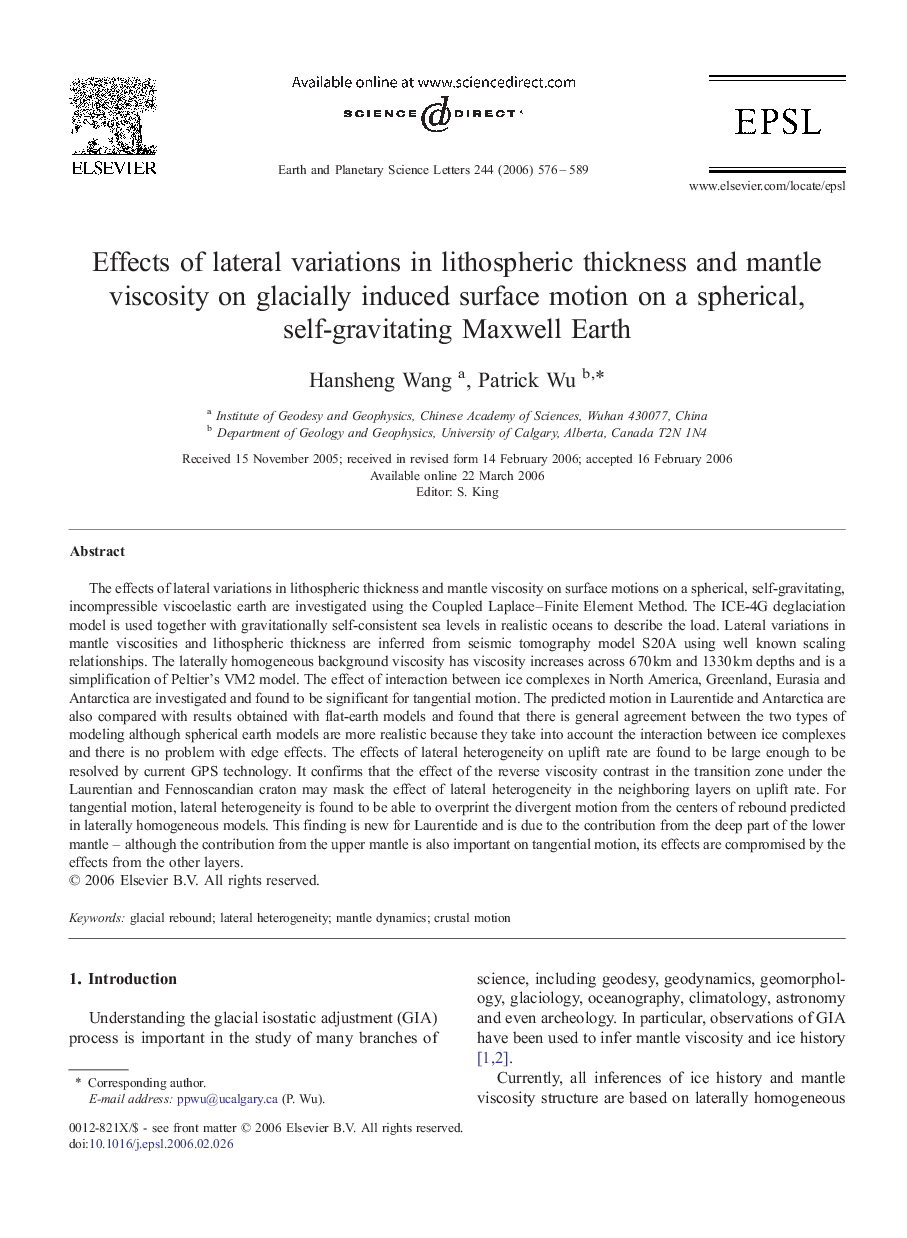| Article ID | Journal | Published Year | Pages | File Type |
|---|---|---|---|---|
| 4681034 | Earth and Planetary Science Letters | 2006 | 14 Pages |
The effects of lateral variations in lithospheric thickness and mantle viscosity on surface motions on a spherical, self-gravitating, incompressible viscoelastic earth are investigated using the Coupled Laplace–Finite Element Method. The ICE-4G deglaciation model is used together with gravitationally self-consistent sea levels in realistic oceans to describe the load. Lateral variations in mantle viscosities and lithospheric thickness are inferred from seismic tomography model S20A using well known scaling relationships. The laterally homogeneous background viscosity has viscosity increases across 670 km and 1330 km depths and is a simplification of Peltier's VM2 model. The effect of interaction between ice complexes in North America, Greenland, Eurasia and Antarctica are investigated and found to be significant for tangential motion. The predicted motion in Laurentide and Antarctica are also compared with results obtained with flat-earth models and found that there is general agreement between the two types of modeling although spherical earth models are more realistic because they take into account the interaction between ice complexes and there is no problem with edge effects. The effects of lateral heterogeneity on uplift rate are found to be large enough to be resolved by current GPS technology. It confirms that the effect of the reverse viscosity contrast in the transition zone under the Laurentian and Fennoscandian craton may mask the effect of lateral heterogeneity in the neighboring layers on uplift rate. For tangential motion, lateral heterogeneity is found to be able to overprint the divergent motion from the centers of rebound predicted in laterally homogeneous models. This finding is new for Laurentide and is due to the contribution from the deep part of the lower mantle – although the contribution from the upper mantle is also important on tangential motion, its effects are compromised by the effects from the other layers.
